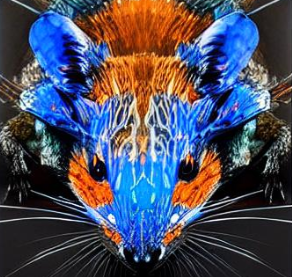It would seem the design that can survive the most extinctions would be the clear winner in the end.
There’s isn’t anything doing selecting. A gene mutates and if it stays in the mating cycle enough times to become part of the species as a whole then it’s become “selected”. That includes things that aren’t good for adapting to an environment as well as things that are.
Differential reproductive success does the selecting: https://www.gutenberg.org/files/2009/2009-h/2009-h.htm
This makes me wonder, why are there no 100% albino species considering albinos can be found in every species and can only produce other albino offspring when paired with other albinos?
Albino is only used as a term when it’s a deviation from the species norm usually. There are all white cave bugs.
Aren’t there, in blind cave species where there’s no pressure to select for coloring to protect from the sun or to camouflage or display for mates?
They get eaten
How does being albino automatically mean being eaten (assuming we rule out species that need camouflage)?
First, the vast majority of species depend on camouflage at least somewhat, since there are very few species that are neither predator nor prey. Also, albinism prevents your skin from properly protecting you from the sun. So even then, it is selected against. As other have pointed out though, caves don’t have either of these forces at play—the darkness makes visual camouflage irrelevant and there is no UV light. So there, as you predicted, most species are albino.
I’d say adaptability would be priority in an environment that is subject to frequent change. Environments that are largely static probably favor efficiency.
Not exactly. There are some species which haven’t changed all that much for millions of years, and those have certainly managed excellent adaptability.
Others, though, might find themselves evolving to cope with the climate right now at the expense of being vulnerable to some future problem. Say the climate is very hot, but in a few tens of thousands of years there’ll be an ice age. An animal which is well adapted to the ice age will probably go extinct before it arrives, having all been eaten by an animal well adjusted to the heat which is here right now.
“In the end” isn’t useful if you get outcompeted in the meantime
There are some species which haven’t changed all that much for millions of years
Like… crocodiles?
The biggest one (aside from obvious examples like sponges and jellyfish) has got to be dragonflies. The original dragonfly was as big three-dimensionally as a footlong sub from Subway, though it was a breathing machine (like us, so let this be a true fable for us to learn from) as it needed oxygen that wasn’t in large enough supply. So it simply shrunk in size to adapt once all the air ran out and there was no Druidia to restore it, and ever since then, we’ve had the same tiny dragonfly model ever since, for almost a billion years.




